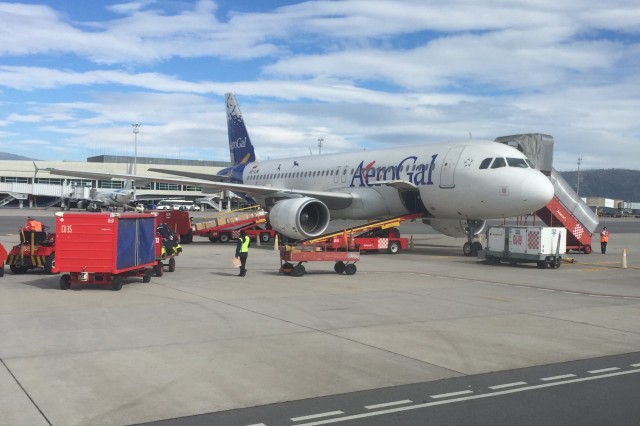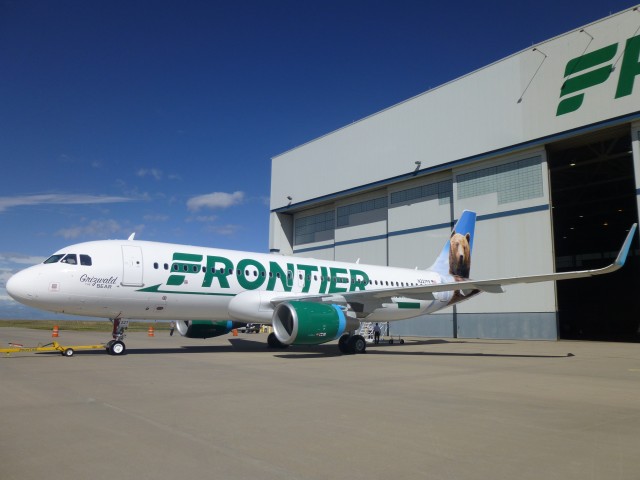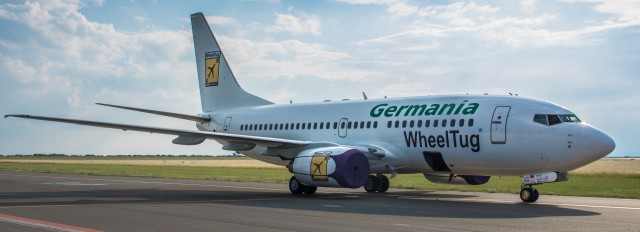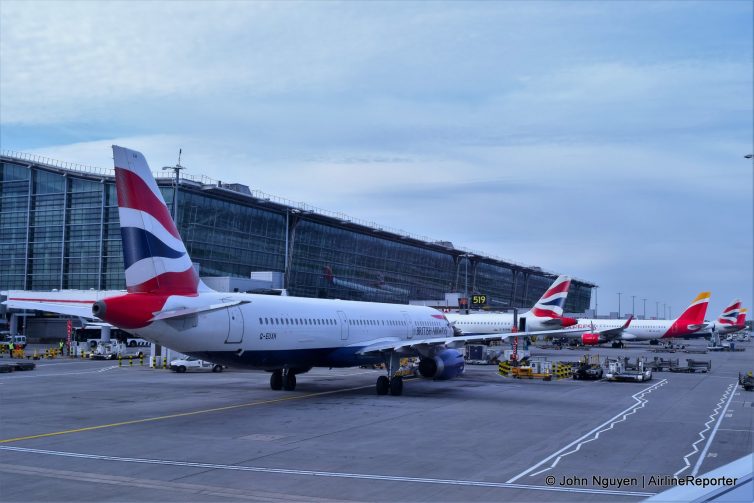I recently had the opportunity to fly both British Airways and Iberia in short-haul economy, and talk about a 180-degree difference, especially striking when both are owned by the same parent company. While short flights don’t generally get much consideration, when one carrier offers so much more than another on the exact same route (namely between London and Madrid) for the exact same price, it’s probably better to go with the airline that will offer more and avoid the one that (spoiler alert) won’t even give you water.
Browsing Tag: A320

HC-CJM, a 2010-built A320-214, still in the Aerogal livery on the ramp at SEQM – Photo: Bernie Leighton | AirlineReporter
Recently, I found myself in Ecuador to go experience endemism in person. If you are not biologically inclined, I am referring to going to the Galapagos archipelago in the Galapagos Province of Ecuador.
I flew into Quito on American Airlines, but because I was part of a group, I was given no choice, or information, on how we were getting to Puerto Baquero Moreno (SCY). If it had been up to me, I’d have flown LAN Ecuador. After all, I am Oneworld Emerald and would’ve loved priority baggage, boarding, lounge access, and whatever else LAN offers Emeralds. Thing is, it wasn’t up to me. We were to fly Avianca Ecuador, operated by Aerogal, not even with seat selection.
Having done my research and spoken to as many frequent-flying locals as I could, I had heard that LAN was head-and-shoulders above both (quasi government owned) TAMà‰ and Avianca. Downcast, but excited to visit islands that cause tons of theological contention, I made my way to Mariscal Sucre Airport in Quito with a quiet sense of sadness.

Frontier Airlines’ new livery, which draws upon their history – Photo: Blaine Nickeson | AirlineReporter
Frontier Airlines, the Denver-based carrier which has recently been pushing towards “ultra-low-cost carrier” status, today revealed a new livery which draws upon their history. The animal tails remain, but the Saul Bass-designed 70’s-era “F” returns, along with the cheat line arrow off the original DC-3s from the 1950s. (While the “F” is cool, my favorite Saul Bass livery still has to be the United tulip – I want to see a United 787 painted that way!)
One nice aspect of Airbus being a “young” aircraft manufacture is that there are representatives of each aircraft family still flying in and out of airports today, like Los Angeles International Airport (LAX). SpeedbirdHD does a great job in catching a representative from each category of Airbus aircraft from the A300 to the A380.
The question is: which is your favorite?

WheelTug testing at Prague Airport using a Germania 737-700 in June, 2012. Yes, it’s moving!
Courtesy: WheelTug
You may have read my recent report on the Honeywell/Safran Electric Ground Taxi System, or EGTS. But as we’ve seen countless times with many technologies, there’s rarely just one solution to a challenge. We’ve had the 707 & DC-8 duo, L-1011 & DC-10s, 737 & A320s, PCs & Macs, iThingys & Everything Else… you get the idea. Interesting, though, that the market usually settles down to 2 options. So it should be no surprise that there’s another E-Taxi system, one that takes a different approach to meeting the same objectives of saving fuel, time, and other operational costs.
Gibraltar-based WheelTug decided to figure out a way to power the nose gear in their E-Taxi solution, and not the main gear. Their reasons? Easier and quicker installation; no interference with braking and anti-skid systems; shorter cable runs to the equipment bay under the cockpit; and it’s lighter, on the single nose gear rather than two main gear. But there isn’t much space available on the nose gear and in the wheel well. To make it all work, WheelTug looked to an old idea updated with new technology – the “wheel-hub” electric motor.
